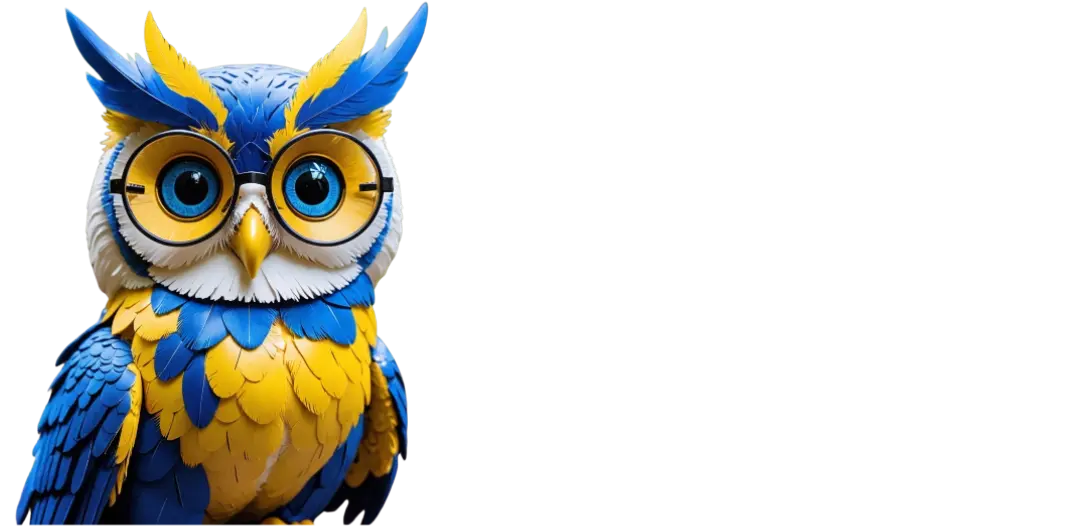Social media has become an essential part of our daily lives in today’s digitally connected world. It has transformed how we communicate, share information, and interact with the world around us. Social media provides a vast landscape of opportunities for businesses to connect with their target audience, build brand awareness, and drive sales.
However, success in social media marketing entails more than just posting content and hoping for engagement. To create a winning social media strategy, you must first thoroughly understand your target audience’s online behavior. This understanding will assist you in determining which platforms they use, the type of content they engage with, and how social media affects their customer journey.
In this blog post, we will discuss the significance of understanding your target market’s social media behavior.
We’ll look at key questions to ask about their preferred platforms, content preferences, and how social media influences their decision-making. By the end, you will have a comprehensive guide on how to use this knowledge to effectively optimize your social media marketing efforts.
1. The Foundation of Social Media Strategy
Not all social media platforms are created equal, and each platform attracts a unique demographic and set of user behaviors. Conduct extensive research to determine which platforms correspond to your target market social media. Instagram, Facebook ads, Twitter promotion, and LinkedIn campaigns are our primary keywords here. As an example:
- Set Clear Objectives
- Choose the Right Platforms
- Content Planning
- Social Media Advertising
- Social Media Analytics
1.1 Set Clear Objectives
The first step in creating an effective social media strategy is to define your objectives. What do you want to achieve through your social media marketing efforts? Whether it’s increasing brand awareness, driving website traffic, generating leads, or boosting sales, having clear and specific objectives will guide your content creation and advertising decisions.
1.2 Choose the Right Platforms
Not all social media platforms are created equal, and each platform attracts different demographics and user behaviors. Conduct thorough research to identify which platforms align with your target Market Social Media. Our focus keywords here are Instagram, Facebook ads, Twitter promotion, and LinkedIn campaigns. For example:
- Instagram: Instagram, known for its visual appeal, attracts a younger audience, particularly those aged 18 to 34. Instagram should be a focal point of your strategy if your target market is this age group and your content consists of visually appealing images and short videos.
- Facebook: As one of the most popular social media platforms, Facebook caters to a wide range of users. It provides a powerful advertising platform that enables you to target specific audiences based on their interests, behaviors, and demographics. Facebook ads can be extremely effective at reaching and engaging with various target markets.
- Twitter: Twitter is well-known for its real-time updates and short bursts of information. It attracts users who are looking for news, and updates, and to participate in conversations. Twitter can be a valuable platform for connecting with your target market if they are interested in timely and concise content.
- LinkedIn: LinkedIn is a professional networking platform geared toward a more business-oriented audience. LinkedIn can be a goldmine for lead generation and establishing thought leadership if your target market consists of professionals, entrepreneurs, or B2B clients.
1.3 Content Planning
Following the identification of the appropriate platforms, the next step is to create compelling and relevant content that will resonate with your target audience. Consider the following factors to do this effectively:
- Addressing Pain Points: Your content should address your audience’s pain points and challenges. Providing valuable solutions will help your brand establish itself as a trustworthy resource and foster trust.
- Humans are hardwired to connect with stories: Use storytelling to communicate your brand’s values, mission, and achievements. A well-crafted narrative can captivate and engage your audience.
- Using Visuals: Visual content like images, videos, and infographics perform extremely well on social media. High-quality, eye-catching visuals can entice users to interact with your content by preventing them from scrolling.
1.4 Social Media Advertising
Incorporate social media advertising into your strategy to broaden your reach and increase the impact of your message. By reaching potential customers who are more likely to convert, targeted ads can significantly improve your return on investment (ROI). You can target specific demographics, interests, and behaviors with advertising options available on platforms such as Facebook, Instagram, Twitter, and LinkedIn.
1.5 Social Media Analytics
Measuring the effectiveness of any marketing strategy, including social media, is critical. You can gain valuable insights into your audience’s behavior and content performance by analyzing your social media performance using relevant metrics and analytics tools.
Facebook Insights, Twitter Analytics, and Instagram Insights, for example, provide data on engagement metrics, reach, impressions, and more. This data will assist you in refining your strategy, identifying effective tactics, and adapting to changes in your audience’s behavior.
2. Knowing Your Target Market Social Media
To understand your audience’s behavior on social media, you must first know who your target market social media is. This involves creating a detailed buyer persona – a fictional representation of your ideal customer. Consider the following factors when defining your buyer persona:
2.1 Demographics
Begin by learning about the demographics of your target audience. Age, gender, location, education, occupation, and income level are among them. This data will help you choose a platform, create content, and determine your targeting options for social media advertising.
2.2 Psychographics
Beyond demographics, investigate your target market’s psychographics. Their attitudes, interests, values, lifestyles, and personalities are all reflected in their psychographics. What drives them? What are their pain points and goals? Understanding their emotions and desires will allow you to create more meaningful and resonant content that addresses their specific needs.
2.3 Online Behavior
In addition to understanding their social media behavior, you should investigate their online behavior beyond these platforms. Do they prefer to read blogs, watch videos, listen to podcasts, or interact in online forums? Understanding their online habits will allow you to tailor your content formats and reach them through various digital channels.
3. Social Media Platform Analysis
Now that you know who your target market is, let’s look at the major social media platforms and how they appeal to different audiences:
3.1 Instagram
Instagram is a visual platform that focuses on images and videos. It has over a billion active users and is especially popular among young people. The majority of Instagram users are between the ages of 18 and 34, making it an ideal platform for reaching a younger audience. If your target market is in this age range and your content can benefit from captivating visuals, Instagram should be a key component of your social media strategy.
3.2 Facebook Ads
Facebook is still one of the most important social media platforms in the world, with over 2.8 billion monthly active users. It attracts users of all ages and demographics, making it a versatile platform for reaching a large number of people. Its robust advertising platform provides sophisticated targeting options based on interests, behaviors, demographics, and other factors. You can effectively connect with different segments of your target market by using Facebook ads.
3.3 Twitter Promotion
Twitter is a microblogging platform that is popular for its real-time updates and short-form content. It appeals to users who are looking for current information and want to engage in conversations. While Twitter has a diverse user base, professionals, journalists, and influencers are particularly fond of it. Twitter can be a valuable platform for connecting with your target market if they are interested in staying informed, engaging in discussions, or seeking updates on current events. Because of Twitter’s fast-paced nature, your content must be concise, attention-grabbing, and relevant to current discussions.
3.4 LinkedIn Campaigns
LinkedIn is the preferred platform for professionals, businesses, and business-to-business interactions. It provides a unique space for networking, lead generation, and thought leadership with over 774 million members. LinkedIn users, unlike other social media platforms, are actively seeking career-related content and professional connections. LinkedIn should be an important part of your social media strategy if your target market social media consists of decision-makers, industry professionals, or potential business partners.
4. Content that Resonates
Understanding your target audience’s preferences and interests is essential for creating content that will appeal to them. Here are some important factors to consider when creating social media content:
4.1 Addressing Pain Points
Focus on providing solutions to your audience’s pain points and challenges to capture their attention. Your content should show how your products or services can solve their problems and make their lives better. Consider conducting surveys, interviews, or social listening to learn more about your target market’s problems and tailor your content accordingly.
4.2 Storytelling
Storytelling is a powerful tool for connecting with and engaging people. Use narratives that are consistent with your company’s values and mission. To create an emotional connection with your audience, share success stories, behind-the-scenes glimpses, and customer testimonials. Emotional stories, such as joy, empathy, or inspiration, are more likely to be shared and remembered.
4.3 Utilizing Visuals
On social media, visual content reigns supreme. Engaging images, videos, and infographics have the potential to captivate your audience while effectively communicating your brand’s message. High-quality visuals can entice users to interact with your content by preventing them from scrolling. Invest in professional photography, design, and video production to improve your content’s visual appeal.
4.4 User-Generated Content
Use user-generated content (UGC) to increase authenticity and trust. Encourage your followers to create and share brand-related content. UGC not only provides social proof for your brand, but it also fosters a sense of community around it. Repost and share UGC while crediting the original creators to strengthen your relationship with your audience.
5. social media and the Customer Journey
Understanding how social media fits into the customer journey of your target market is critical for tailoring your content and engagement strategies. Here are some examples of how social media can affect each stage of the customer journey:
5.1 Awareness Stage
Your target market is discovering your brand for the first time during the awareness stage. Social media is critical for introducing your brand and generating initial interest. Create engaging and shareable content that highlights your brand’s personality, values, and unique selling propositions. To attract attention, consider using eye-catching visuals, interactive polls, and engaging videos.
5.2 Consideration Stage
Potential customers are evaluating various solutions to their problems during the consideration stage. Your content should provide useful information that emphasizes the advantages of your products or services. Case studies, product demonstrations, and educational content can help you demonstrate your expertise and persuade prospects of the value of your brand.
5.3 Decision Stage
Your target market is ready to make a purchase decision at the decision stage. Social media can help to increase their trust in your brand and provide the final push for conversion. To entice potential customers to take action, offer special promotions, discounts, or limited-time offers. Additionally, make sure that your social media channels respond to customer inquiries and provide excellent customer service.
6. Measuring social media Success
Monitoring and analyzing key performance metrics is critical for determining the effectiveness of your social media marketing efforts. Here are some key metrics to monitor:
- Engagement Metrics
- Reach and Impressions
- Conversion Metrics
- Referral Traffic
- Return on Investment
- Social Media Analytics Tools
6.1 Engagement Metrics
Engagement metrics track the amount of interaction and interest generated by your content. Keep track of metrics like likes, comments, shares, and retweets. High engagement indicates that your content is resonating with your target audience and sparking discussions.
6.2 Reach and Impressions
The number of unique users who have seen your content is referred to as reach, whereas impressions represent the total number of times your content has been displayed. Monitoring reach and impressions allows you to gain a better understanding of your brand’s overall visibility as well as the reach of your messaging.
6.3 Conversion Metrics
Conversion metrics measure how well your social media efforts result in desired actions like website clicks, sign-ups, and purchases. You can measure the direct impact of your social media marketing on your business objectives by tracking conversion rates from social media.
6.4 Referral Traffic
Examine the amount of traffic that comes from social media platforms to your website. Referral traffic reflects the effectiveness of your content and the level of interest it elicits among your target audience.
6.5 Return on Investment (ROI)
Calculate the return on investment (ROI) of your social media marketing efforts by comparing the cost of your campaigns to the revenue generated. Measuring ROI allows you to assess the financial success of your social media efforts.
6.6 Social Media Analytics Tools
Utilize the various social media analytics tools made available by platforms such as Facebook, Twitter, LinkedIn, and Instagram. These tools provide useful information about your audience’s behavior, content performance, and campaign success. You can make data-driven decisions and refine your strategy based on real-time insights by using analytics tools.
7. Leveraging Influencer Marketing and Viral Content
Influencer marketing and viral content have the potential to significantly amplify your brand’s reach and impact. Here’s how to leverage these strategies effectively:
7.1 Influencer Partnerships
Collaboration with social media influencers who have a large following and influence in your target market is what influencer marketing entails. Determine influencers whose audiences are similar to yours and whose values are compatible with your products or services. Authenticity is essential in influencer marketing, so focus on developing genuine relationships with influencers who genuinely like your brand.
7.2 Creating Viral Content
Viral content has the potential to significantly increase the visibility and reach of your brand. While there is no surefire formula for creating viral content, there are some key components that increase the likelihood of success:
- Emotional Appeal: Content that evokes strong emotions such as happiness, surprise, or awe is more likely to be shared and spread virally.
- Relevance: Keep current trends, events, and popular culture in mind when creating content for your target audience.
- Humor: People enjoy sharing content that makes them laugh. Humorous content spreads quickly on social media platforms.
- Contests and Giveaways: Contests and Giveaways: Hosting contests and giveaways can increase user participation and the likelihood that content will be shared.
Conclusion
Understanding your target market’s social media behavior is the foundation of a successful social media marketing strategy. You can tailor your approach to maximize engagement and conversions by knowing which platforms they use, the type of content they engage with, and their position in the customer journey.
Remember to use relevant metrics and analytics tools to continuously analyze and measure the effectiveness of your social media campaigns. This data-driven approach will enable you to adapt your strategy and remain relevant in a rapidly changing digital landscape.
Keep in mind as you begin your social media marketing journey that developing a strong online presence takes time and consistent effort. Engage your audience, respond to their comments, and build meaningful relationships.
Take Action Now, Supercharge Your Online Marketing! 🚀
Ready to take your organization’s marketing to the next level? 🚀 Contact us now to unlock the full potential of online marketing! 🌟 Let’s grow your business, attract more clients, and save money on effective marketing strategies. 💼 Fill out the form here ➡️ https://bit.ly/3p0bBS5 or book a convenient Zoom meeting ➡️ https://bit.ly/3TR3Wn6. 📆 Don’t miss this opportunity to get all your burning questions answered! 🔥 Let’s supercharge your marketing efforts together! 💪





